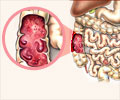The test to detect colitis involves testing serum for the presence of mannose using infrared technology which is cost-effective than endoscopy.

TOP INSIGHT
Attenuated Total Reflectance Fourier Transform Infrared (ATR-FTIR) spectroscopy detects elevated levels of mannose in the blood, indicating colitis.
"This rapid, simple, cost-effective and minimally invasive technique could be further developed into a personalized diagnostic tool that would assess disease status based on an individual's molecular composition and allow for personalized diagnosis and drug management. Perhaps this technology could be integrated into a portable device, such as the glucometer used by patients with diabetes."
Inflammatory bowel diseases, which include ulcerative colitis and Crohn's disease, involve chronic inflammation of all or part of the digestive tract and can lead to life-threatening complications such as colorectal cancer.
Assessing this inflammation remains a challenge, and clinical diagnosis is now achieved by colonoscopy, which uses an endoscope or flexible tube with a light and camera attached to examine the digestive tract. This technique is not ideal for an annual checkup or monitoring disease activity regularly because it's expensive, invasive and requires sedation.
As a result, "there is a need for a simple, inexpensive and low-risk diagnostic tool for inflammatory bowel diseases," said Didier Merlin, professor in the Institute of Biomedical Sciences at Georgia State and a researcher at the Atlanta Veterans Affairs Medical Center. "Infrared spectroscopy has greatly enhanced clinical medicine in the last two decades and shows promise as a solution."
In the second group of mice, colitis was induced by administering Dextran Sodium Sulphate. Colitis in these mice is similar to ulcerative colitis in humans. In both groups, feces and blood samples were collected and tested. Mice in control groups were also tested.
Source-Eurekalert
 MEDINDIA
MEDINDIA




 Email
Email







